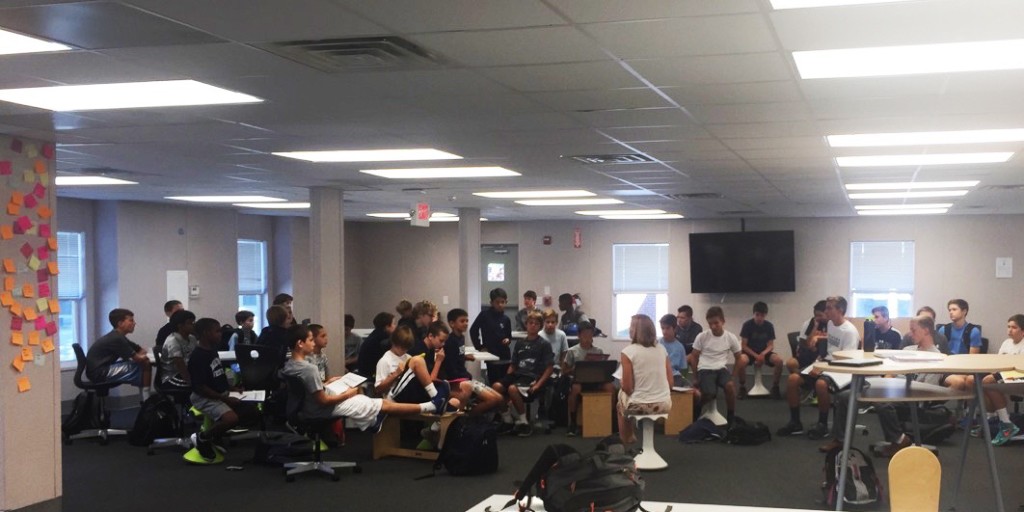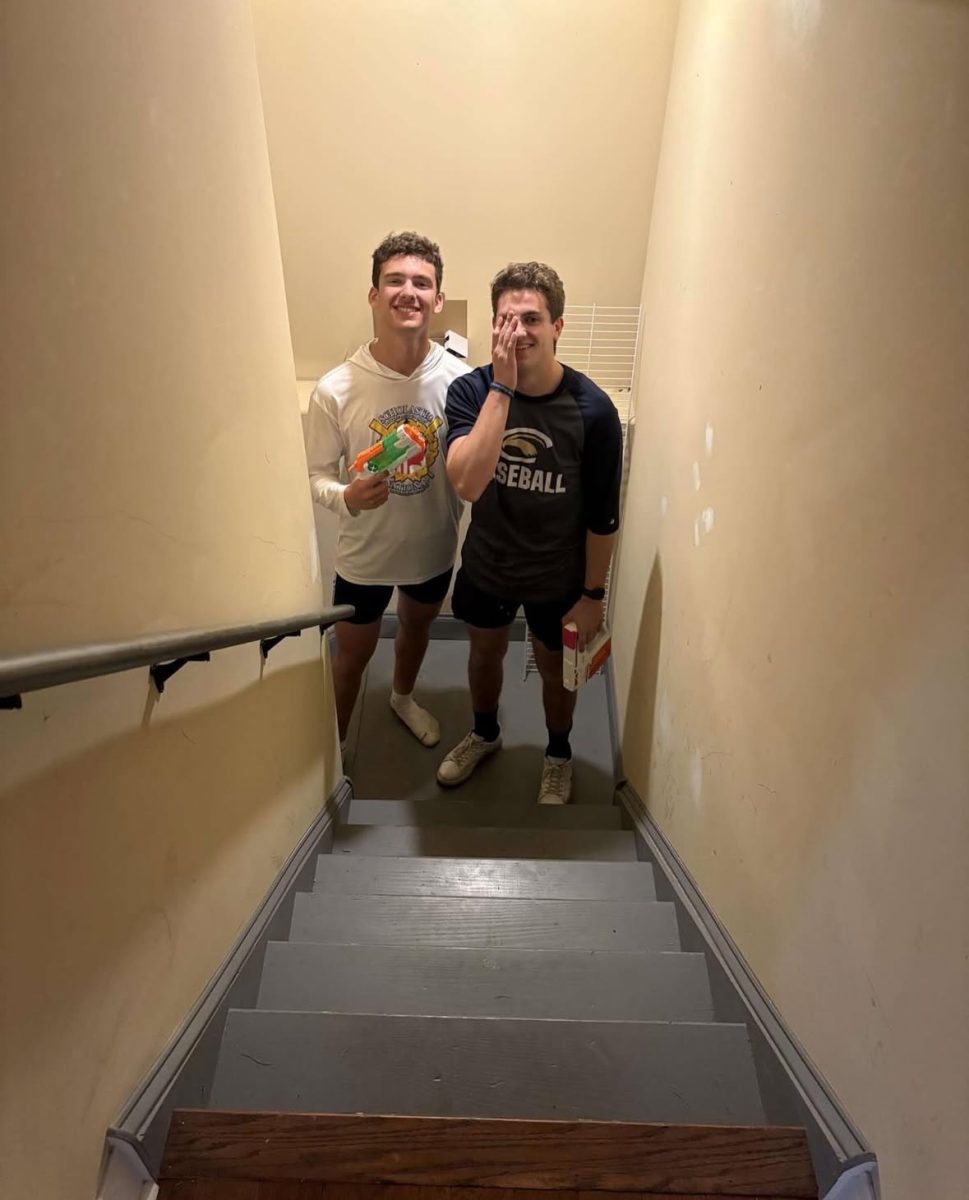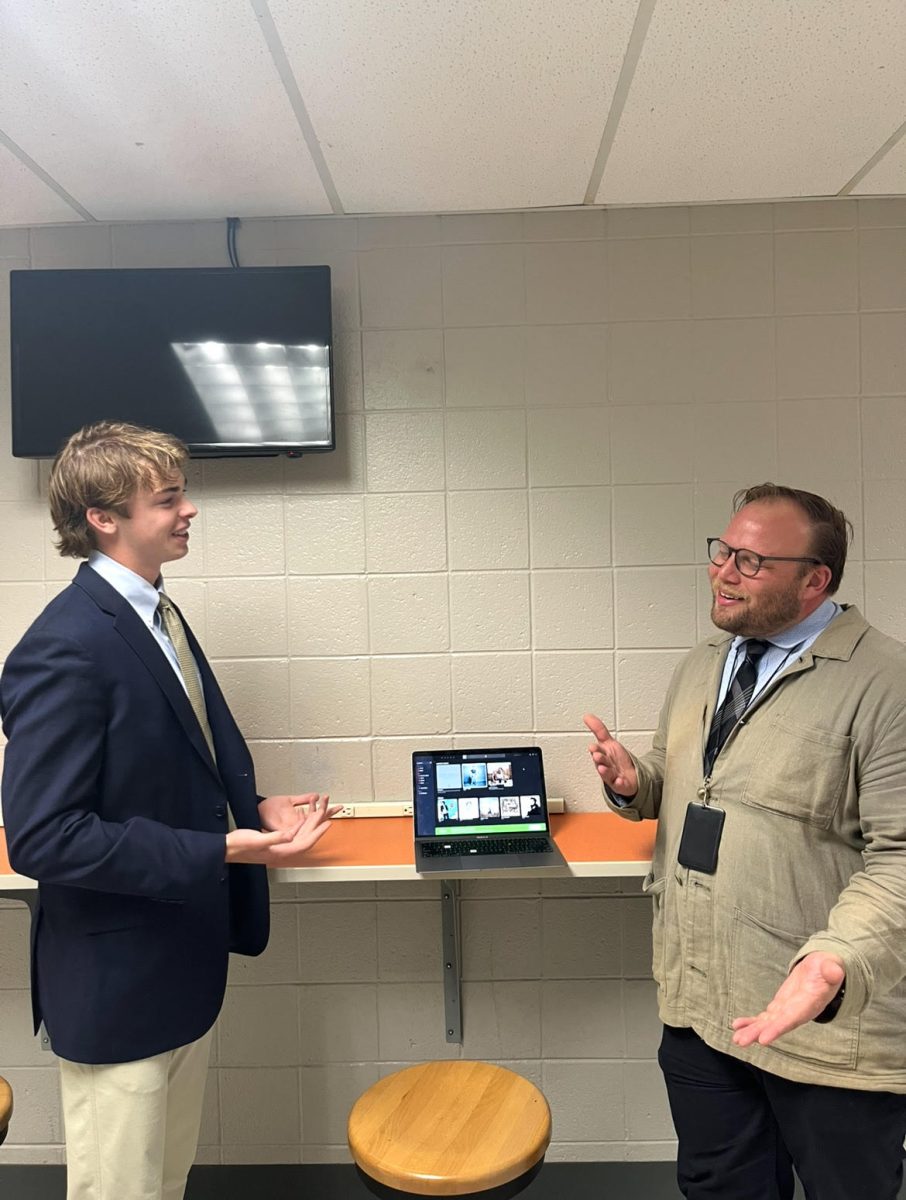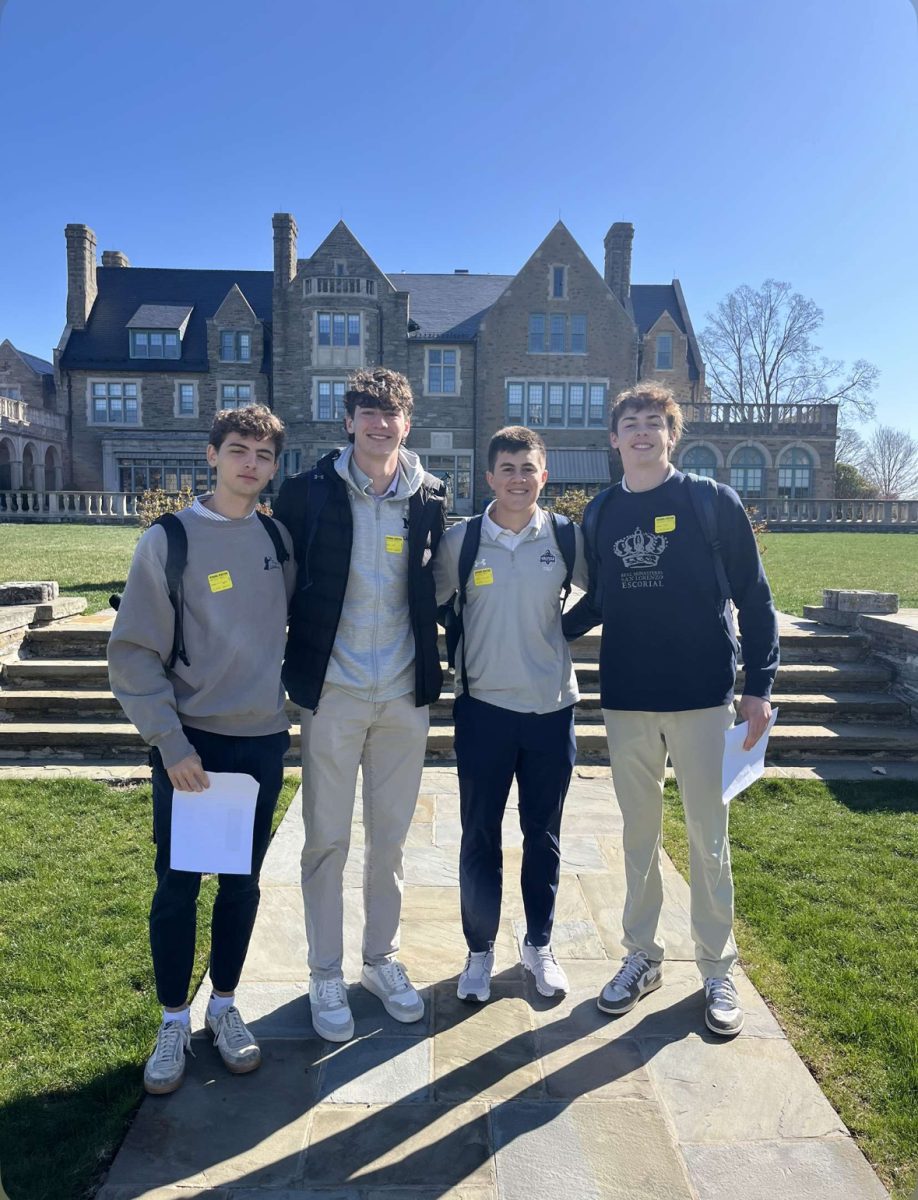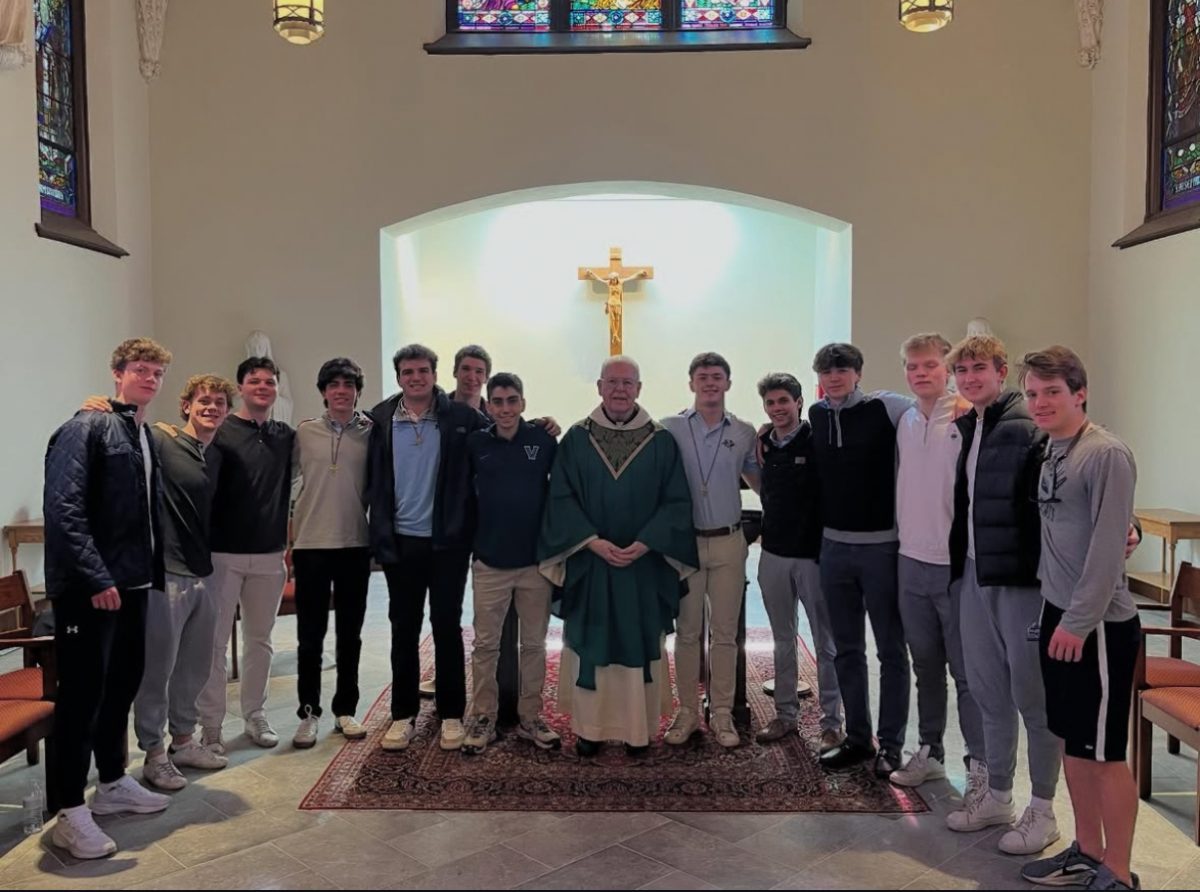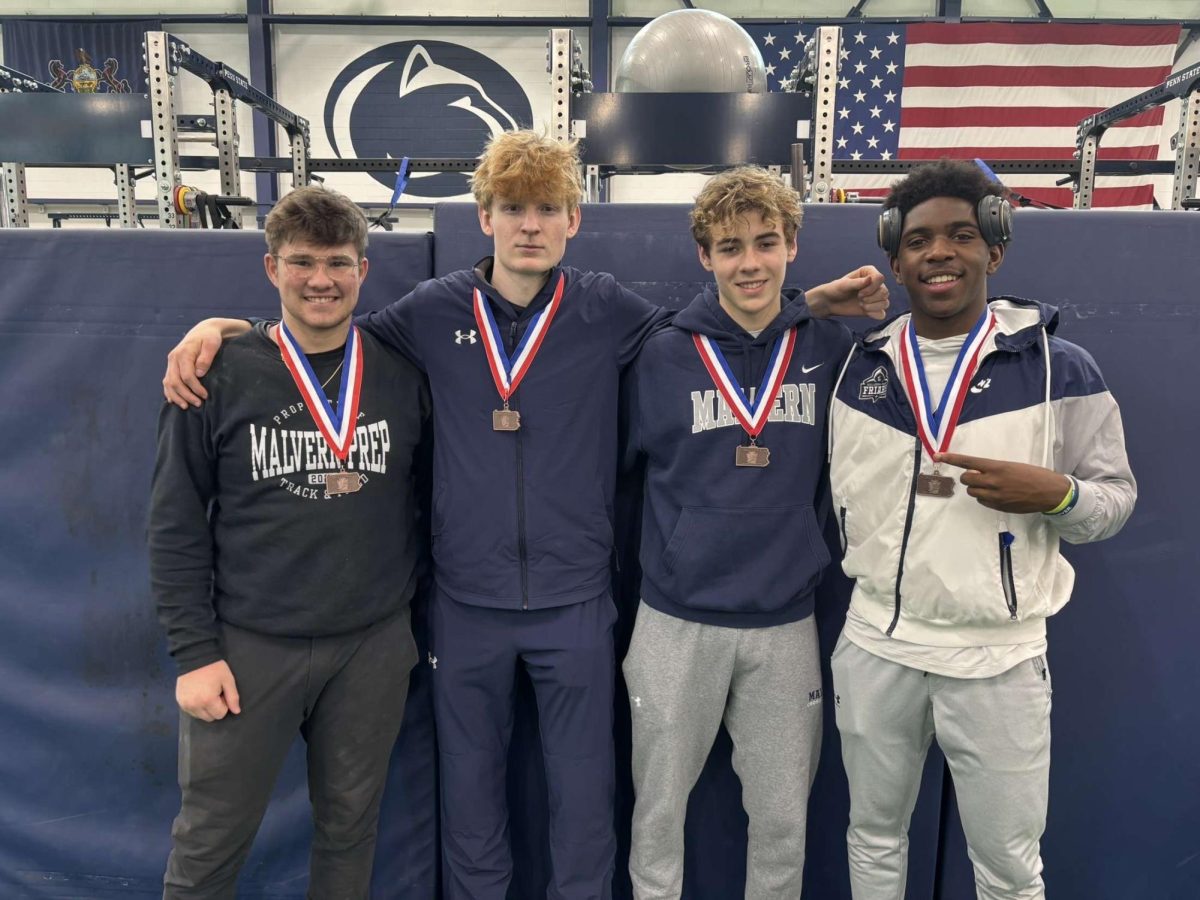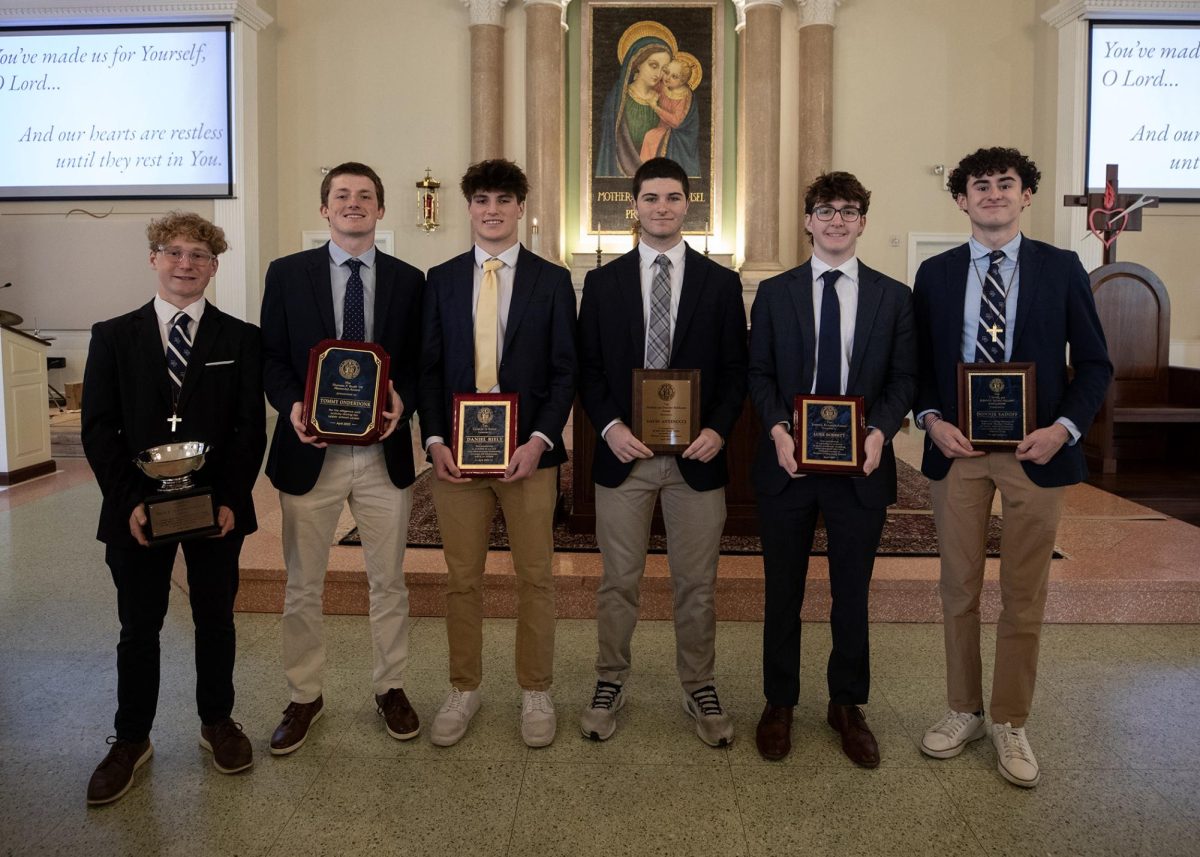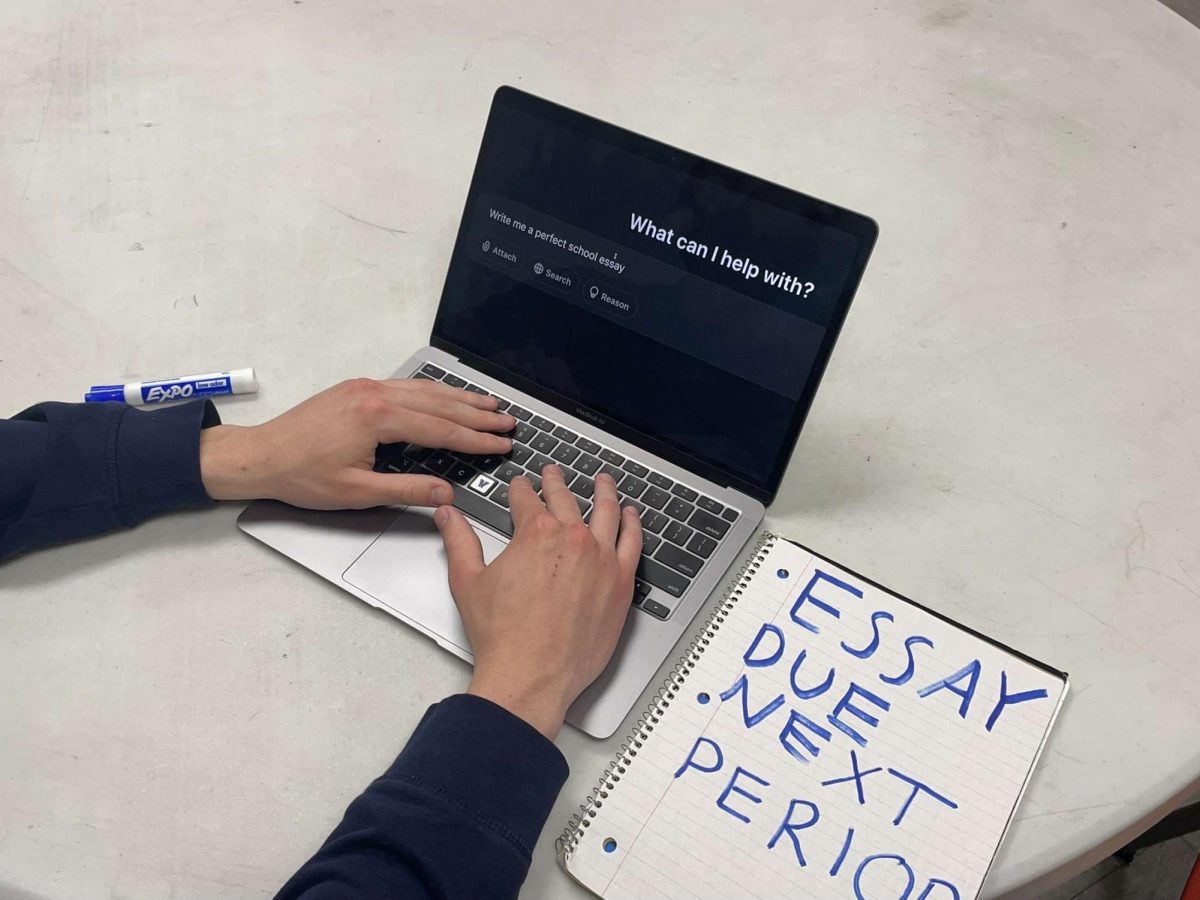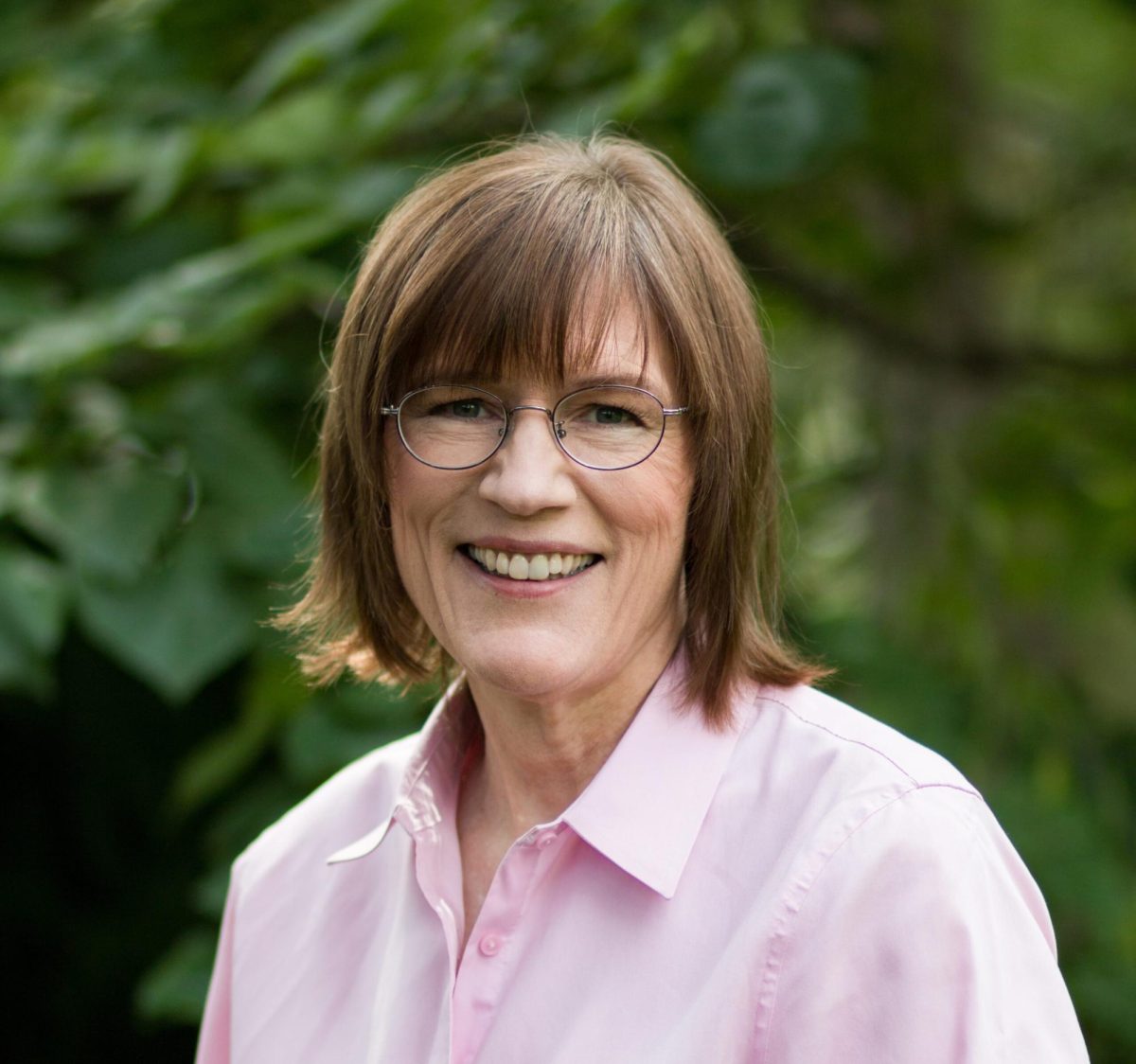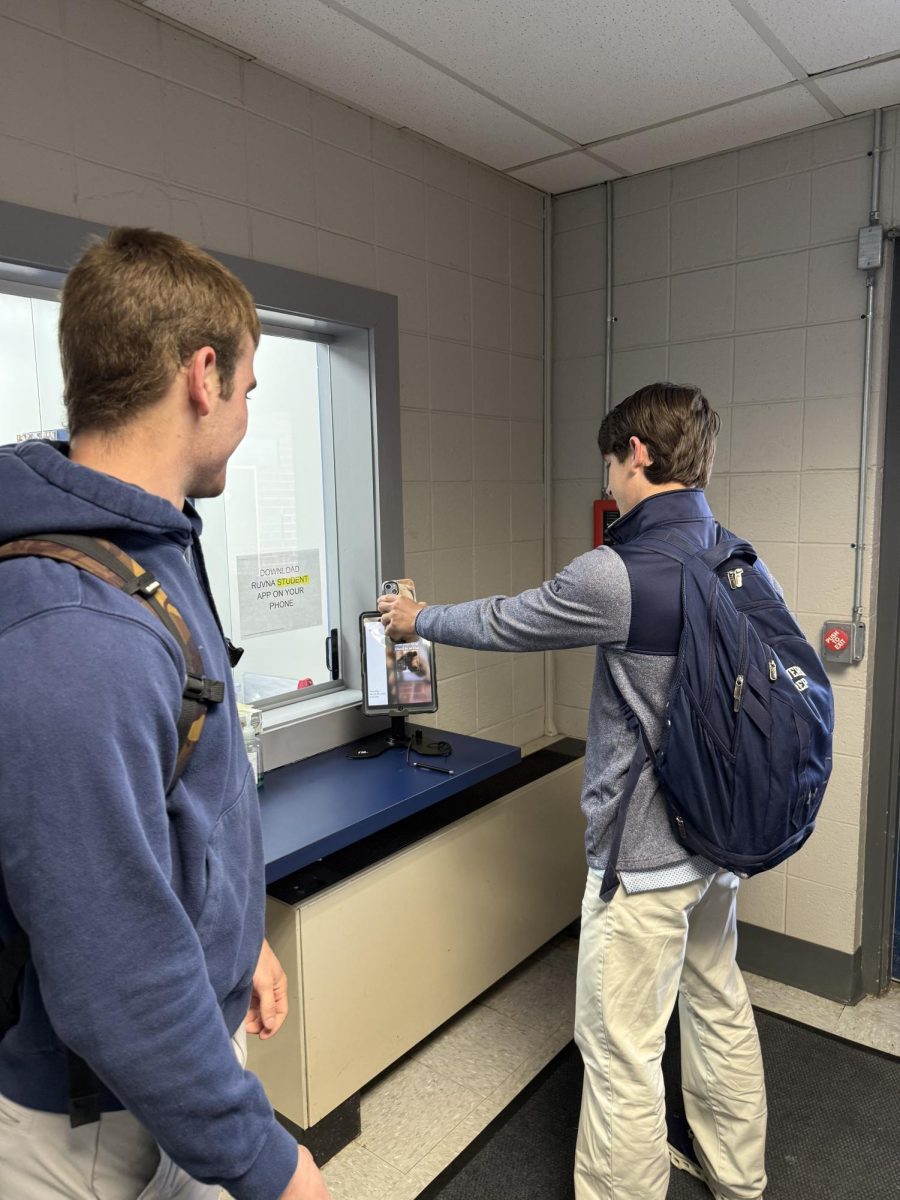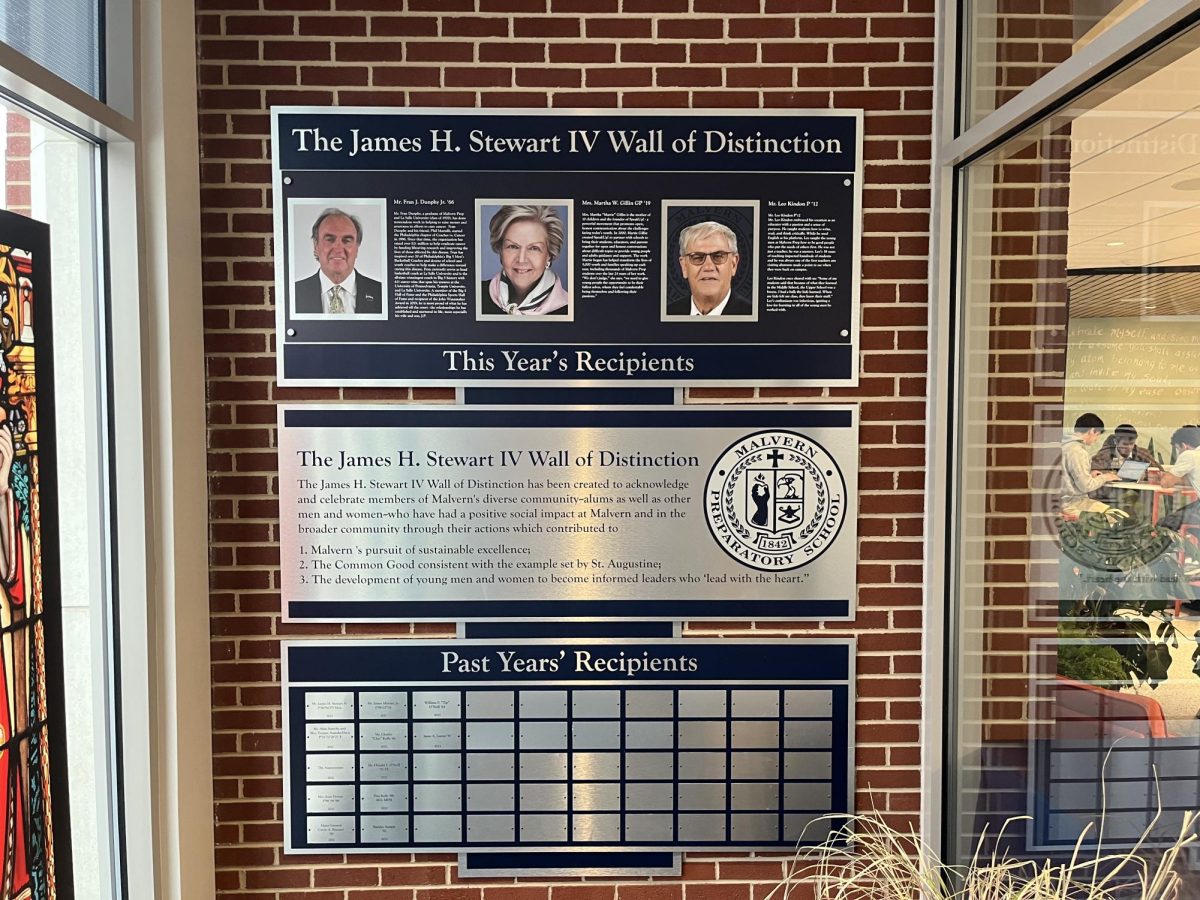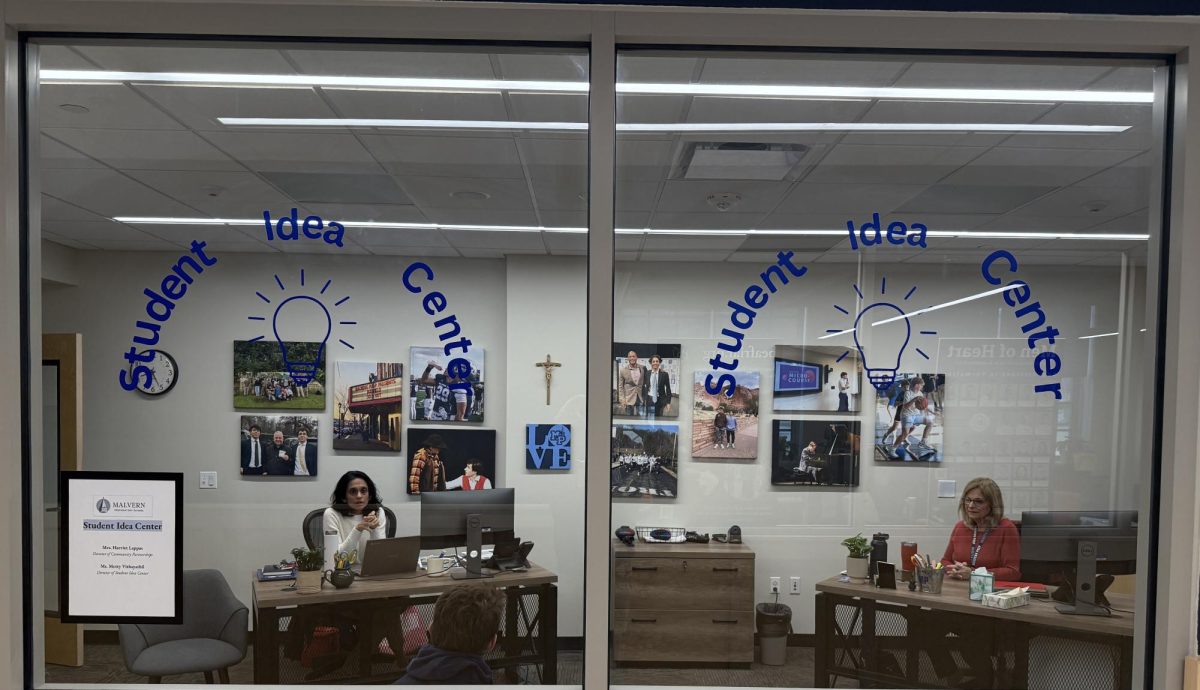
“In the Learning Commons we’re competing for time,” Middle School Head Mr. Pat Sillup said. “So what if we had a space where we could be there all day?”
The middle school’s new modular classroom is in the parking lot between the Duffy Center and Dougherty Hall. The building’s layout is still in the working stages, however, there are plans to optimize its learning capabilities, middle school science teacher Mr. Christopher DeVido said.
While reducing the traffic in the Sullivan Hall Learning Commons was a main reason for the mod being built, the building also serves to foster the style of student-centered learning the Middle School has adopted.
“Grades easily get put on the back burner when the flow is focused on honing students’ strategies of growth through strong habits of work. This leads to enhancing their skills of communication, collaboration, literacy, and critical thinking,” DeVido said. “The goal is to be able to apply the content they synthesized in an authentic way. That is when real learning occurs and makes testing become just another tool for growth, and not the main focus of education.”
The reason the module will be effective in nurturing this method of learning is much like the Learning Commons in Sullivan.
“The mod is a safe, open-minded, and creative area that doesn’t lock students into a cookie cutter way of ‘doing school,’” said DeVido. “It allows them to practice good habits of work either individually or within a team to enhance their skills that will put them in the best position to succeed. It literally puts the student at the center of his learning.”
“Technology-wise we are going to have large TVs in the back for POL’s or Presentations of Learning,” DeVido said. “Our guys can chromecast to them and learn technological skills along with the subject field they are presenting.”
“There is a ton of space in here for research,” DeVido said.
On top of the TVs and chromebooks, the entire modular classroom is wired with speakers in a unique way.
“We can alter where we want the sound to be coming from; in essence we can zone it,” DeVido said. “If we have one group studying or working in the corner and one group is presenting or needs to watch a video with sound, the one group can hear while the other is uninterrupted.”
Perhaps one of the best features is the absence of clutter, said DeVido.
“One of the of the most important things is moveable space,” DeVido said. “It’s important for the students to learn how to construct an environment for success rather than having it laid out for them already.”
In place of their study halls, students from 6th, 7th and 8th grade will have classes that prepare them for competitions in which they explain real-world problems and solutions, DeVido said.
Eighth Grade math teacher Mr. Gary Duda said that that the modular spaces are a good idea. He said he plans to use the space like he did the Learning Commons, as a “help desk.”
Although Duda doesn’t think that the new space will change the way he teaches because “math is what it is,” he thinks the space may change other teachers’ methods.
Along with use during class time, the space will also be used for the middle school community time and breaks.
“On certain days, 6th grade will use it, on certain days 7th grade will use it, and then 8th grade will use it whenever 6th and 7th aren’t using it,” said one of the moderators of the module, former history teacher Mr. Chuck Chinici.
According to Sillup, Chinici was chosen to moderate the mod space because he loves to connect with students. Although Malvern transitioned Chinici to a role in the Development Office in July, Sillup wanted to put him somewhere where “students could pull up a chair and talk with [him]”
“His office was sort of off the beaten path,” said Sillup. “And those interactions just didn’t seem to take place as much.”
Late in his teaching career, Chinici is enthusiastic about the changes to the middle school. “After teaching history for forty-five years… it’s an exciting way to wind down,” Chinici said.


